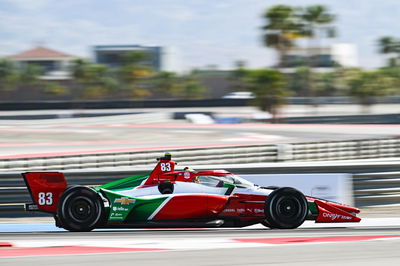Finale result glitch to prompt timing review.
The Indy Racing League has said that it will be reviewing and checking the positioning of transponders fitted to its competing cars in a bid to prevent the embarrassing mix-up over who had actually won Sunday's IndyCar Series finale at Chicagoland Speedway.
The Indy Racing League has said that it will be reviewing and checking the positioning of transponders fitted to its competing cars in a bid to prevent the embarrassing mix-up over who had actually won Sunday's IndyCar Series finale at Chicagoland Speedway.
An initial review of timing and scoring systems after the race showed that the transponder on Scott Dixon's #9 Target Chip Ganassi Racing car had been improperly installed, resulting in the Kiwi being shown in top spot on the results display, rather than race winner Helio Castroneves, who the naked eye had suggested had won. A review of photos from the league's state-of-the-art high-speed camera subsequently revealed that the Brazilian had edged Dixon by 0.0033 of a second - the equivalent of about twelve inches - in the second-closest margin of victory in IndyCar Series history.
"The improperly installed transponder clearly affected the data we were receiving from Dixon's car," said director of timing and scoring Jon Koskey, "With the signal going the wrong direction, it could have bounced off of any number of things and made it difficult for the antenna to pick up an accurate signal. Because there's always the possibility of electronic equipment failing and the possibility of human error, we have multiple systems in place to insure the accuracy of the data."
The league's high-tech timing and scoring system is one of the few in motorsports that scores to ten-thousandths of a second - the Australian V8 Supercar series being another - and the manufacturer claims a system tolerance of 0.0006secs for each crossing.
Backing up the system is a high-speed camera, which takes a picture every ten-thousandth of a second, recording all start-finish line passings. The league acquired the S/F camera in 2004 as a back-up to the electronic system and uses it after every race to verify the finishing order of all cars. It also is used throughout the race to check close crossings. Additionally, two high-frame-rate cameras connected to a digital video system record video evidence of all start-finish line passings.
Immediately after the conclusion of Sunday's PEAK Antifreeze & Motor Oil 300, the camera operator informed race stewards that the photos showed Castroneves' car in the lead, prompting competitions president Brian Barnhart to review the images and confirm the Team Penske driver as the winner.
"We've invested hundreds of thousands of dollars in this system since 2001 to make sure our timing systems are accurate and provide the officiating staff with the information necessary to make good judgment calls such as this," Barnhart said.
"The primary system includes three parts comprised of a radio transponder mounted in the same location on each car, multiple detection loop antennas buried under the track and timing decoder units that decipher the transponder signals as it crosses the antenna. We back up that system with the start/finish line camera and secondary electronic systems.
"We use the high-speed camera to review the finishing order of every car at every race. It's not always that close between the top two cars, but we have close finishes further back in the field all of the time."
The league has confirmed that the positioning of transponders is likely to become a part of the weekend's technical eligibility checks from the 2009 season.










